What is Biodynamic Farming? Rudolf Steiner's Blueprint
What is Biodynamic Farming?
Biodynamic farming was a concept put forward by Dr. Rudolf Steiner and is based around the following pivotal concepts:
1) The importance of of maintaining a sustainable soil fertility.
2) The relationship between plant growth and the rhythms of the cosmos.
Biodynamic farming places great importance on the rhythmic positions of moon, sun and planets when sowing seeds, transplanting, applying liquid fertilizers or spraying fruit trees and crops, i.e. Moon Planting as well as the concept of companion planting, crop rotation and composting.
The basis of a healthy farm is the correct proportions of crops to livestock. The moment one is grown to excess the balance is disrupted. Monocultures are unhealthy and should be avoided.
Biodynamic farming uses a series of preparations which are based on various mineral, plant and animal substances. These will enhance all the bacterial and mineral processes that are found in the organic farming system and help the plants and soil.
Therefore Biodynamics in a nutshell is the 'Biological' practices of organic farming that improve the quality and fertility of the soil. It is bringing a higher degree of life activity in the soil, plants and animals by using the dynamic methods of Mother Nature. 'Dynamic' practices are intended to influence the biological and metaphysical aspects of the farm.
Normal Organic Farming Practices
Organic farmers practice the following management techniques to maintain a sustainable system.
1) They ensure plant nutrients are maintained by addition of animal manures, or green manures made into composts, and also use additional essential mineral elements.
2) Animal manures are usually combined with plant materials, and are applied in the form of well made composts, in which the organic materials have been converted into stable humus through a fermentation process.
3) Cover Crops in the form of green manures and quick growing legumes and/or grasses are plowed into the ground, mulched onto the top of the soil or used as compost-making material.
4) Phosphorus may be used by top-dressing crops with natural rock phosphate, calcium by a light dressing of hydrated or agricultural lime. If magnesium is also deficient, dolomite may be used instead of lime.
5) Crops are rotated to control weeds, fungi and insects and to promote healthier plants.
What does Biodynamic Farming therefore offer the Organic Farmer?
The organic farmer would continue to enrich the soil as already stated above, however, with Biodynamic farming, it has been shown that techniques used make these processes occur more effectively and more efficiently.
Biodynamic Farming and the Preparations that ensure for better Soil Fertility and Healthier Plants
These preparations for Biodynamic farming were suggested by Steiner in great detail. Where the first 2 preparations (500 & 501) are used for field preparation, Preparations 502-507 are for making compost.
Horn Manure Preparation (500) is made from taking cow manure and stuffing it into well-cleaned cow horns. 4 horns are used for each hectare of land. These are then buried in root-free soil, to a depth of 40-60 cm, placed during autumn and left to decompose over winter. It is to be used in spring and horns are removed during a descending period of the moon.
It brings in the Earthly forces and helps the soil develop humus and structure and attract earthworms and soil micro-organisms. Best of all, it will work equally well in any soil type whether it is silt, clay, volcanic or peat.
Horn Manure Preparation (500) is applied at 75 grams/hectare, stirred for 1 hour in 34 liters of high quality water - slightly warmed. This is applied to the whole farm 2-4 times a year in spring and autumn in droplet form, late afternoon. It can also be sprayed prior to planting.
Horn Silica Preparation (501) is made from ground quartz crystal which brings in the silica activity. It is buried in the same soil pits used for (500), in cleaned cow horns, over summer and used in autumn. When removing the horns the moon should be in an ascending position.
The yellowish silica powder is removed from the horns and stored in glass jars, near light.
Only a tiny amount is used in Biodynamics to take the light forces into the roots to aid photosynthesis, uptake of minerals and trace elements from the soil, increase dry fiber content and sweetness of the fruit or grass. It aids in the resistance to pests and fungal disease by increasing the sugar content in the sap which strengthens the root system.
It should be sprayed on crops at low pressure during the wet season to prevent fungal diseases. In addition, it should be applied on an overcast day to prevent the leaves from getting burned by the sun.
It can be sprayed on fruit trees at budding to strengthen against insect attack. Use again at Moon opposition Saturn each month when fruit is walnut size for apples and stone fruit, and for grapes, one two-thirds of the size has been reached. Spray again when fruit is about to ripen to increase sugar levels and aid in its keeping qualities.
2 grams is stirred in 34 liters of high quality water for one hour and applied at sunrise to all crops and pastures over spring and summer.
Yarrow Preparation (502) uses the yarrow flowers which are then placed in a dried, inflated stag, moose or deer bladder. Before using the bladder soak it in warmed rainwater. Moisten the flowers with warmed rainwater before placing in bladder. Stuff until bulging and close with thread. This is suspended off the ground, 6 feet in the air, and placed in full sun during the summer. During the autumn it is buried 6-12 inches in fertile soil. After a year, removed the flowers from the bladder and store in an earthenware pot.
It is used in Biodynamic farming to stimulate the potassium, silica, selenium activating bacteria and helps combine sulfur with other substances. Remedies weaknesses in flowering and fruiting, and strengthens the plant against insect attack. The Yarrow Preparation aids the soil in connecting to the planetary rhythms.
Chamomile Preparation (503) uses the chamomile flowers which are packed in the small intestines of recently dead cows. Collect the flowers are early as possible in the spring and then dry them. Before stuffing them into the intestine moisten with warm rainwater. This is buried in autumn in fertile soil and used in spring. Store in an earthenware pot until needed.
It retains nitrogen and calcium which helps to strengthen the plant's regenerative life activity and reunites this with the physical. It also stimulates manganese and boron, as well as azotobacter activity which is the best bacteria for creating nitrogen in the soil.
Stinging Nettle Preparation (504) uses the whole Stinging Nettle plant before it flowers. Allow the flowers to dry slightly so that is fades somewhat in color. It is then buried in an earthenware pot in fertile soil for a year with peat on all four sides. Remove, sieve and store in an earthen pot.
This preparation in Biodynamic farming conveys intelligence to the soil, helps in decomposition, aids chlorophyll formation, stimulates iron, potassium, calcium, magnesium and sulfur activity in the soil.
Oak Bark Preparation (505) is chopped into small pieces and placed in a cleaned skull of a cow, or another domesticated animal. This is then surrounded in peat and buried in a place where there is a lot of watershed from rain. It remains buried for the winter. Store in an earthen pot until needed.
This preparation helps pull the earthly forces back into the soil, when the water activity is working too strongly, such as after lots of rain or at full moon. It also helps to prevent fungal disease. Helps calcium and phosphorus work its way into the earth.
Dandelion Preparation (506) uses dandelion flowers which are stuffed into a cow's mesentery (peritoneum) and buried in winter to be used in spring.
This stimulates the potassium/silica bacteria in the soil to enable it to work more effectively with the growth forces. Can help with flowering and fruiting. Also stimulates the magnesium, boron and selenium soil activity.
Valerian Preparation (507) uses the dried flowers to make a tincture, with the water to dilute using a ratio of 1:4. A teaspoon of this is then added to 15 liters of quality water and used to spray the whole compost heap to form a warmth blanket.
This stimulates the phosphorus process and aids the phosphorus-activating bacteria in the soil, as well as selenium and magnesium. If sprayed onto fruit blossoms in spring it can provide protection from a late frost.
Horsetail Preparation (508) uses horsetail or casuarina leaves. The green shoots of the horsetail are collected and dried.
This can be used as a tea to control fungal diseases. Take 100g dried leaves, mix with 5 liters of high quality water and boil gently. Before using stir for 10 minutes and spray on plants and soil during full moon.
Using the Compost Preparations
As said earlier, Preparations 502-507 are mainly used for making compost, liquid manure or tea.
A teaspoon of each is taken and added to a dung heap. Only preparations 502-506 are used by digging 50 cm holes into the dung, 2 meters apart and adding a teaspoon of each. The Valerian preparation (507) is used in Biodynamic farming to promote warmth.
Biodynamic Farming and the Compost Heap
The compost heap is trapezoidal in shape with a base width of 15 feet and a top width of 6 feet. It should never exceed 6 feet in height.
Drainage tiles or brushwood are added first to create suitable drainage. Then manure, bedding straw, sawdust, fallen leaves, and other organic matter are added to the heap in thin layers, with the vegetation always been moistened with rainwater first. In between the organic material are thin layers of sprinkled lime or other rock powders and then finally soil. The compost heap is built like this, with these 3 layers, ending off with a layer of soil which will cover the compost heap completely.
It is only when the compost heap is about 3 feet high that the special preparations 502-507 are put into the compost heap.
After about 4-5 months the compost heap is mixed and turned. More preparations are added to the pile if needed.Getting the Most out of Biodynamic Farming
Biodynamic farming allows you to achieve high yields in small spaces. The best way to use your compost it in raised vegetable beds or by if you are going to use ordinary beds, it should be incorporated into the soil through the 'double digging' method. Here beds are dug to 2 spade's deep. Then the soil is removed in rows, to the depths of 1 spade's depth and set aside. Compost is mixed into the remaining soil in the trench. Organic material is also added to the soil that has been set aside and that is then added back into the newly mixed trench.
Read our exclusive Biodynamics Interview with Bernard Jarman, director of Biodynamic Agricultural Association, UK.
Did you find this page helpful?
Sharing is a way of saying, "Thanks!"
Follow Us and Keep Up to Date
You can Add your own Comments, Tips and Ideas on Biodynamic Farming and Sustainable Farming Here!
We have lots of pages where you can contribute to throughout this homesteading website. We love hearing from our readers, and hope you will be one of those we hear from too. Look around our homesteading website. If you have some comments, tips, or ideas on Biodynamic farming and sustainable farming of your own, please submit them. All you need to do is type and submit. We will do the rest!
Leave a Comment
Do you have anything that you would like to add after reading this page? We would love to hear your thoughts. If you can add additional information to what has been written here you will be adding value to the website! No need to have any special skills - just type and submit. We will do the rest!



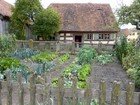
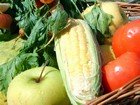



 Tell
us about your best farm holiday spent on a ranch or farm and tell us
what made it so special. Farm holidays can make for a great holiday.
They are ideal if you are trying to save money or working to a small
budget. They also allow you to rest and relax in a way that busy
tourist
destinations simply cannot.
Tell
us about your best farm holiday spent on a ranch or farm and tell us
what made it so special. Farm holidays can make for a great holiday.
They are ideal if you are trying to save money or working to a small
budget. They also allow you to rest and relax in a way that busy
tourist
destinations simply cannot.



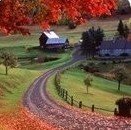

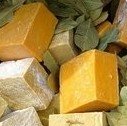
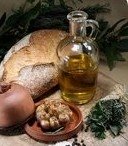

New! Comments
Do you have something of value to add? Leave me a comment in the box below.